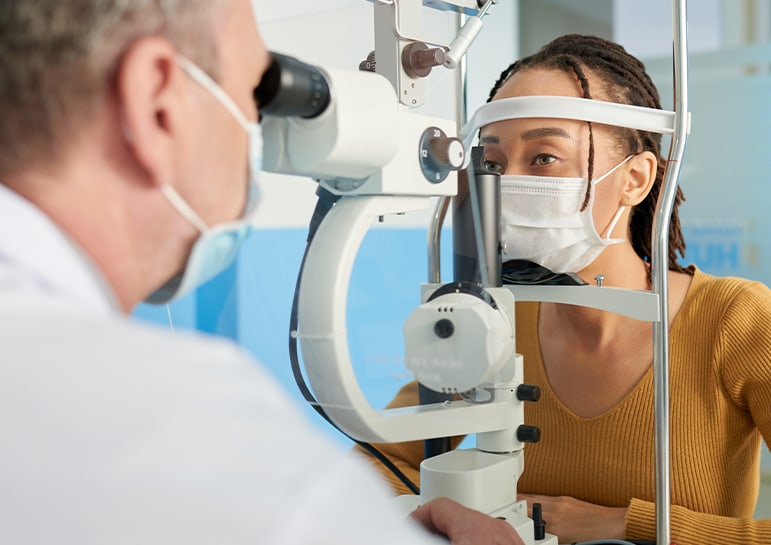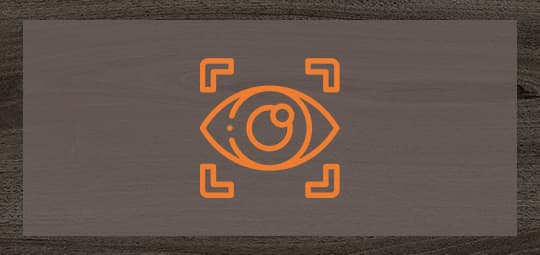Helping You Soothe Your Dry Eyes
Dry eye is an ocular surface disease that occurs when your eyes don’t produce enough tears or when the tears evaporate too quickly. It’s caused by a dysfunction in the tear film, the thin layer of tears on the eye’s surface that keeps them healthy and comfortable.
At Family Vision Care in Marion, we understand how frustrating dry eyes can be. We offer personalized dry eye care to help alleviate your symptoms and improve your eye health. Our experienced staff will work with you to identify the underlying cause of your condition and develop a personalized treatment plan.
Contact us today and take the first step toward more comfortable vision.
Request AppointmentCommon Dry Eye Symptoms
Dry eye can cause a range of uncomfortable, irritating symptoms, including:
- Eye redness
- Stinging, scratching, or burning eyes
- Sensitivity to light
- Watery eyes
- Mucus in or near the eye
- Blurry vision
If you have any or all of these symptoms, book an appointment with us today to find out if you have dry eye.
The Tear Film & Dry Eye
The tear film protects, nourishes, and keeps your eyes healthy. The root of dry eye lies in the structure and function of this tear film.
The tear film is made of 3 distinct but equally crucial layers:
- An outer oily layer that prevents tear evaporation
- A middle watery layer that hydrates and nourishes the eye
- An inner mucus layer that ensures the smooth and even distribution of tears across the eye
Each layer plays a vital role in maintaining eye health. When there’s a disruption in the balance of these layers, dry eye can occur.
Risk Factors for Dry Eye
Various risk factors can disrupt the healthy balance of tear production and distribution, including:
- Environment: Exposure to dry, windy climates or heated or air-conditioned spaces can evaporate tears.
- Screen use: Prolonged screen use prevents you from blinking, which can lead to digital eye strain and increased tear evaporation.
- Age: As we get older, we naturally produce fewer tears. Most people over 65 have some level of dry eye.
- Contact lens use: Contacts can absorb water and disrupt the tear film, irritating the eye’s surface.
- Immune system disorders: Certain autoimmune diseases, such as Sjögren’s syndrome, can affect tear production.
Medications: Some medications, including antidepressants and antihistamines, can cause dry eye as a side effect.
Types of Dry Eye
Dry eye can be divided into 2 different types: evaporative and aqueous-deficient. While both types share similar symptoms, they stem from other underlying causes and require different treatments, so a proper diagnosis is essential.
Evaporative Dry Eye
Evaporative dry eye is primarily caused by a problem with the tear film’s oily layer, which prevents the tear film from evaporating too quickly. The most common cause of oil problems is meibomian gland dysfunction, which occurs when the tiny oil glands that line your eyelids (meibomian glands) become blocked, reducing the amount of oil secreted onto the eye’s surface. Without enough quality oil, your tears evaporate too quickly.
Aqueous-Deficient Dry Eye
While evaporative dry eye stems from a lack of oil, aqueous-deficient dry eye occurs when there’s an issue with the watery layer of the tear film. This deficiency can be triggered by various causes, including autoimmune diseases, hormonal changes, certain medications, or the natural aging process.
Aqueous-deficient dry eye is caused by insufficient tear production and can lead to irritation and burning. Lack of lubrication can also cause discomfort when blinking or difficulty wearing contact lenses.
Dry Eye Relief Options
Dry eye can make your day-to-day tasks more difficult. Fortunately, we can offer several therapies and lifestyle changes to help alleviate your symptoms.
These are just some of the ways to treat dry eye and provide comfort from symptoms. Visit our office today to discuss further treatment options we can offer.
Artificial Tears
Artificial tears are over-the-counter lubricating drops that provide an instant burst of moisture. They can be used throughout the day to relieve dry eye symptoms.
Not all over-the-counter products are created equal. We can offer personalized recommendations.
20-20-20 Rule
Working on a computer all day can contribute to digital eye strain and dry eye. The 20-20-20 rule can help rest and relax your eyes while encouraging you to blink and spread that vital tear film across your eyes—every 20 minutes, take a 20-second break and look at something at least 20 feet away.
Eye Nutrition
Like the rest of our body, our eyes need proper nutrients to function. A diet rich in omega-3 fatty acids, vitamin C, and vitamin E can help maintain healthy eyes and prevent dry eye symptoms. Foods such as salmon, tuna, leafy greens, citrus fruits, and nuts are all great sources of these essential nutrients.
Take a Step Toward Relief
Living with dry eye can be more than just uncomfortable. It can interfere with your daily life and make simple tasks challenging.
But you don’t have to accept this discomfort. At Family Vision Care in Marion, we are dedicated to finding you relief and healthy, happy eyes. Take the first step toward lasting relief by booking an appointment today.
Request AppointmentOur Location

Our Address
- 122 N. Main Street
- Marysville, OH 43040
Contact Information
- Phone: 937-642-1300
Our Hours
- Monday: Closed
- Tuesday: 9:00 AM – 7:00 PM
- Wednesday: 9:00 AM – 5:00 PM
- Thursday: Closed
- Friday: Closed
- Saturday: Closed
- Sunday: Closed

Our Brands












